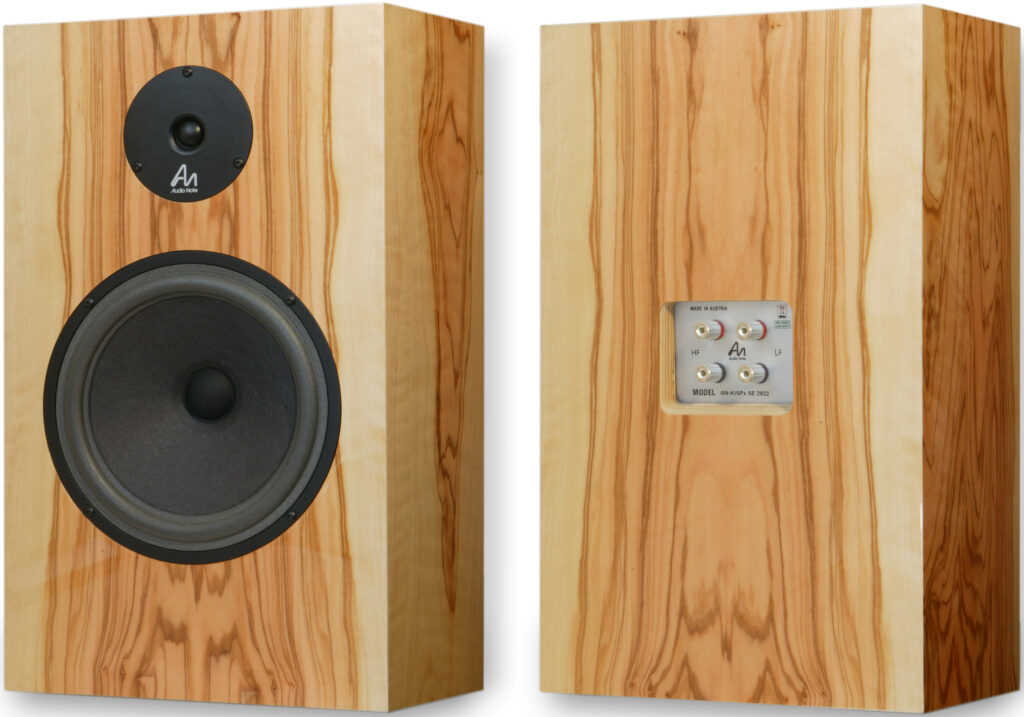The AN-K/SPe is a two-way rectangular box that is wider than it is deep. The speaker employs a 0.75-inch silk dome tweeter and an 8-inch paper woofer with foam surrounds in a sealed cabinet design. If this speaker description reads as exciting as a puffed rice cake then I don’t blame you. When I first saw the AN-K they were in a room with far fancier loudspeakers with metal tweeters, curved cabinets, and exotic woofer materials. Moreover, the AN-K was up against loudspeakers I had heard of and knew from the glitzy magazine hype.
Back in the early 2000s in Canada, I asked the sales staff at Soundhounds, Victoria BC’s premier high end audio store, to prepare a series of stand mount speakers to audition. In the shootout were the usual suspects of the time, which included B&W, Paradigm, Dynaudio and Reference 3a. I had auditioned these brands for over a decade; however, this was my chance to audition them in the same dedicated audio room back to back.
I was smart enough to ask the dealer to add any other speaker they thought would be suitable in terms of price and size. They added the Audio Note AN-K/SPe, a rather retro-looking cabinet design that looked like it could have been from the 1970s or early 1980s. Since the AN-K speakers are based on the Snell Type K from the early 1980s, the retro impression was and is certainly valid.
To my shock, dismay, and horror, the AN-K/SPe won the shootout. “Who is Audio Note ?” I thought at the time. This little-known brand with dumpy looks just handed the big boys their lunch. I did some research; the company was known for SET amplifiers at crazy prices and expensive cables. Groan! Snake-oil incarnate! How could unknown speakers from an amplifier maker so easily best highly regarded speaker manufacturers who were and are dedicated solely to making loudspeakers?
Yet, the AN K/SPe separated itself immediately with piano, Beethoven’s Moonlight Sonata to be specific. The AN-K/SPe reproduced the piano such that it was felt in the room. The instrument sounded more complete from top to bottom while the other speakers came across as pale imitations. The Reference 3a MM De Capo i delivered seemingly good spatial cues and it also had a bigger bass response than the B&W, Paradigm, and Dynaudio at the time. The De Capo i was a favorite of mine and came close in certain respects. I felt it possessed superior image depth but over time the image depth never went away — every piece of music had a seemingly deep sound stage. I chalked it up to an artifact of the loudspeaker rather than presenting what was on the recording. The other speakers under test lacked a sense of cohesiveness and presented more of an X-ray presentation of the music. The leading edge was there but I could hear the separation of sound from driver to driver to driver. The AN-K/SPe was so far-and-away the better speaker that it reduced speakers that I greatly admired and was preparing to purchase, to virtually unlistenable. The analogy I can come up with would be that they sounded like 128Kbps MP3 versus FLAC.
Something must have been wrong. There is no way paper beats Kevlar, and silk beats titanium. And all the magazines were pushing narrow baffle speakers with curves over hard edges and wide baffles.
I went back several times to be sure I was not reacting to a novel presentation of music that might, over longer periods, show up more warts. After all, the company was known for SET amplifiers and I remember the arguments back in the day, and still today, that people who liked SET amplifiers were gravitating to the smoke and mirrors of various distortions. Once the smoke and mirrors passed, and over a long term of listening, SET amplifier charms would wear off. SET amplifiers aren’t, quote, “Hi-Fi.”
After a few more head-to-head comparisons in a follow up session with B&W’s N805 and the Reference 3a MM De Capo i, the AN-K/SPe continued to win my heart and mind. The N805’s treble sounded grainy on Barber’s “Adagio for Strings” as well as with oboes and flutes with various Vivaldi pieces that I was so enamoured with at the time. The K/SPe reminded me of a single-driver speaker but with bass and treble. The De Capo i lost ground with vocal reproductions as occasionally they seemed pushed too far back in the mix and I had trouble making out lyrics clearly — the speaker made me work harder. Meanwhile, the AN-K/SPe kept everything balanced and straightforward and honest. If the album had a singer more upfront, I heard the singer more upfront. If a singer was further back, I heard him further back.
- (Page 1 of 2)
- Next page →






Did you find this model superior for low level listening?
Hi – typically higher efficiency speakers and electrostatics tend to work well at low volumes. The AN-K works well at low volumes. It is not a speaker that needs to be played loud to play well like most narrow baffle speakers with long-throw woofers.